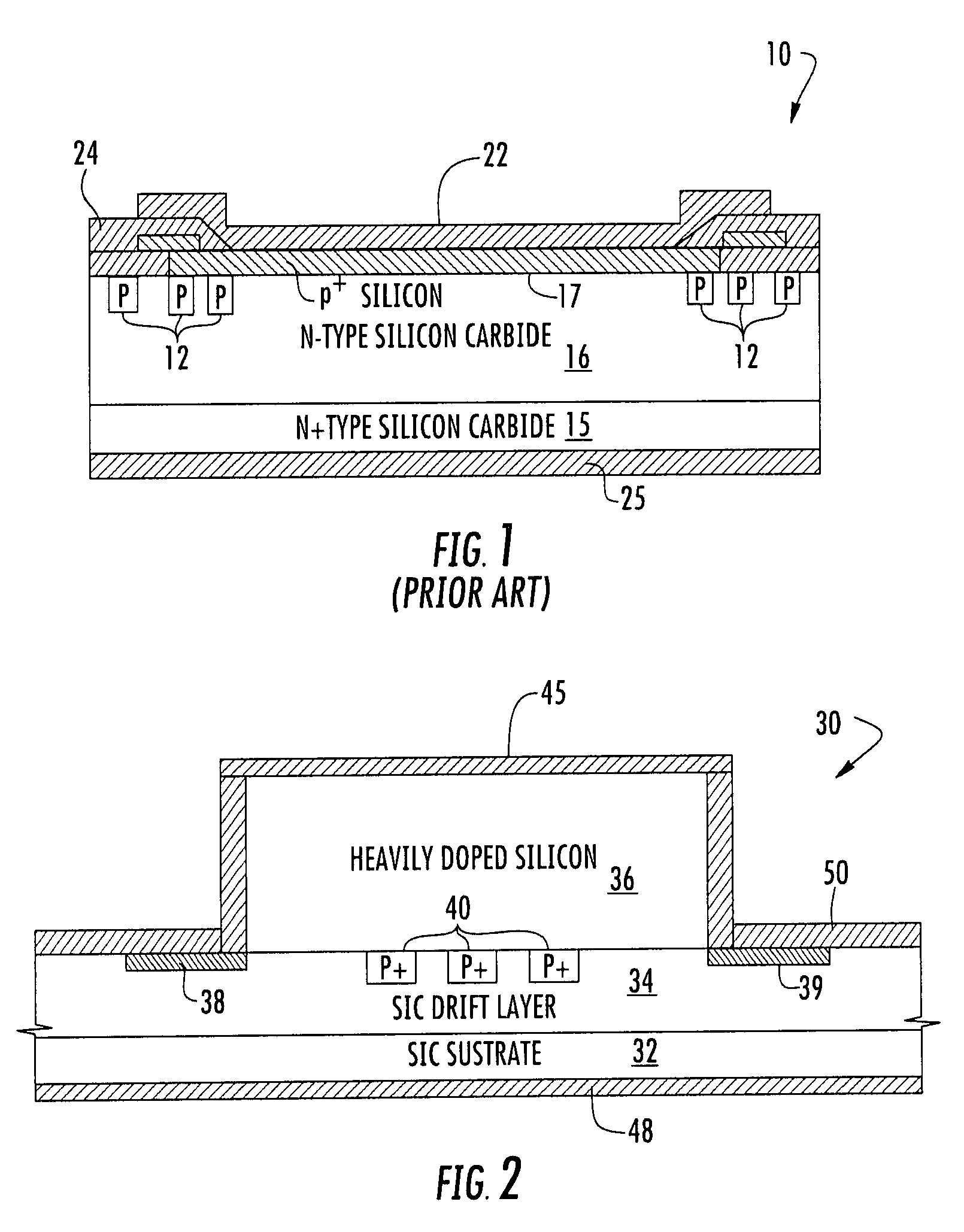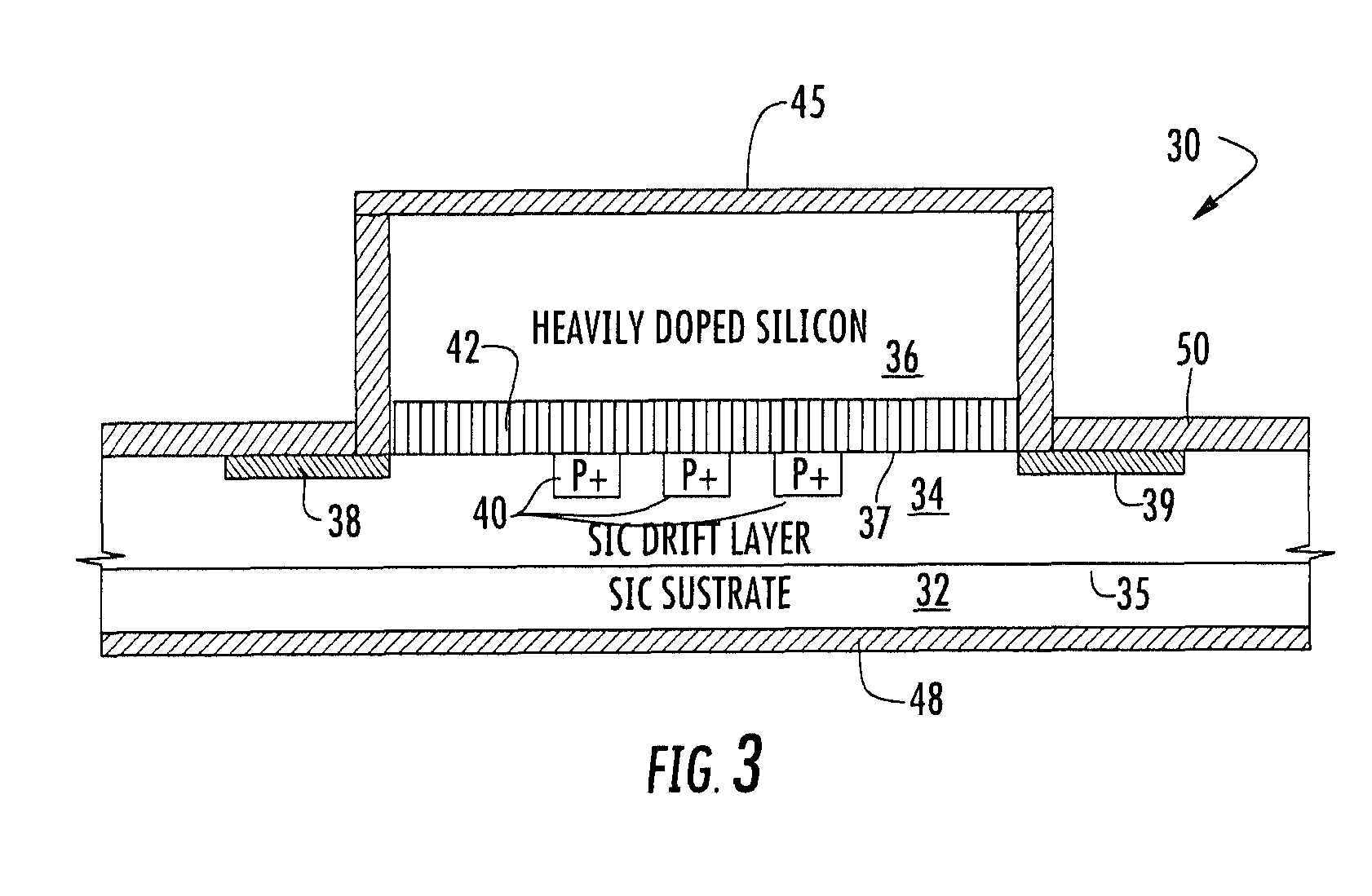Schottky diode structure with silicon mesa and junction barrier Schottky wells
a technology of silicon mesa and diode structure, which is applied in the direction of diodes, semiconductor devices, electrical apparatus, etc., can solve the problems of tanaka failing to realize and the maximum voltage blocking capability of the device being decreased by on-state performance, and achieves high forward conductivity and reverse voltage blocking ability.
- Summary
- Abstract
- Description
- Claims
- Application Information
AI Technical Summary
Benefits of technology
Problems solved by technology
Method used
Image
Examples
Embodiment Construction
[0018]The diode of this invention achieves a low on-resistance and yields surging capability as well as avalanche breakdown by incorporating a doped silicon mesa and JBS implants into the body of the device. The new construction also allows the substrate to be extremely thin. By adjusting the thickness of the silicon mesa, the diode disclosed herein also maintains sufficient mechanical strength for dicing and incorporating into a larger circuit.
[0019]FIG. 1 shows a prior art heterojunction diode (10) having JBS implants (12) along the edges of the junction region for terminating the device. The diode (10) includes n+ type (15) and n− type (16) silicon carbide layers supporting a p+ type silicon layer (17). The anode (22) is connected to the p+ silicon layer (17), and the edges of the silicon layer (22), the n− layer (16), and the anode (22) are covered with a nonconductive passivation layer (24). The prior art diode (10) is completed with a cathode (25).
[0020]FIG. 2 shows an improve...
PUM
 Login to View More
Login to View More Abstract
Description
Claims
Application Information
 Login to View More
Login to View More - R&D
- Intellectual Property
- Life Sciences
- Materials
- Tech Scout
- Unparalleled Data Quality
- Higher Quality Content
- 60% Fewer Hallucinations
Browse by: Latest US Patents, China's latest patents, Technical Efficacy Thesaurus, Application Domain, Technology Topic, Popular Technical Reports.
© 2025 PatSnap. All rights reserved.Legal|Privacy policy|Modern Slavery Act Transparency Statement|Sitemap|About US| Contact US: help@patsnap.com



